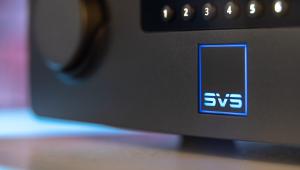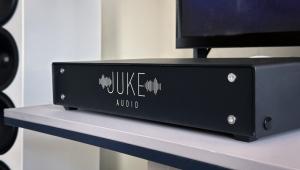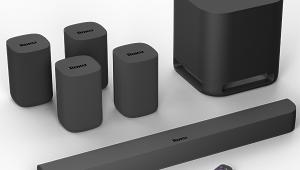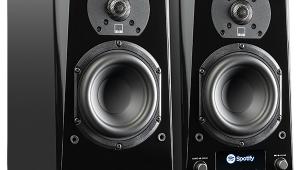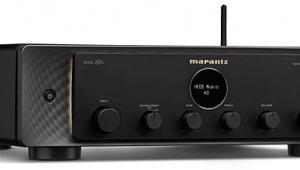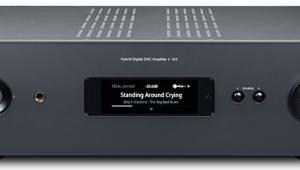Review: Aperion Aris Wireless Windows Speaker Page 3
Measurements
Frequency response
57 Hz to 20 kHz ±8.1 dB avg. 0° to 30°, ±3.0 dB 200 Hz to 10 kHz
57 Hz to 20 kHz ±8.7 dB 0° on-axis
Bass output (CEA-2010A standard)
• Ultra-low bass (20-31.5 Hz) average: NA
20 Hz NA
25 Hz NA
31.5 Hz NA
• Low bass (40-63 Hz) average: 98.3 dB
40 Hz 83.8 dB
50 Hz 95.8 dB
63 Hz 104.9 dB
To measure the quasi-anechoic frequency response of the Aris, I set it atop a 2-meter stand and placed the microphone at a distance of 2 meters. (Quasi-anechoic measurements eliminate reflections from surrounding objects to simulate measuring in an anechoic chamber.) The microphone was placed on the same axis as the left tweeter, then moved around slightly to try to get the flattest response. The measurement shown in the chart was made with the unit in the Natural mode. I then ran a ground-plane measurement at 1 meter to get the bass response. To create the graph shown here, I spliced the bass response to the average of quasi-anechoic measurements of the left channel only taken at 0°, ±10°, ±20°, and ±30°. I used a Clio FW analyzer in MLS mode for the quasi-anechoic measurements and log chirp mode for the close-miked sweep, feeding the test signals into the Aris's 3.5mm line input. The quasi-anechoic measurements were smoothed to 1/12th octave. The blue trace shows the 0° on-axis response, while the green trace shows the averaged response.
On-axis or averaged, the Aris's frequency response (blue trace) in Natural mode shows a clear downward tilt in the tonal balance. However, the differences between the on-axis and averaged curves are mild - just a slight dip in the treble between 2 and 7 kHz - indicating good horizontal dispersion. The response is also admirably smooth, achieving an honest-to-goodness ±3 dB from 200 Hz to 10 kHz.
I also measured the effect on frequency response of the Aris's additional listening modes. Interestingly, the Bass Boost and Enhanced Stereo modes both deliver flatter response than the Natural mode. Both substantially increase treble response, by +6.6 dB at 15.4 kHz and +3.2/+1.4 dB (respectively) at 7.1 kHz. Both introduce a midrange dip: -2.5 dB for Bass Boost, -5.1 dB for Enhanced Stereo. And both boost the bass: +2.9 dB for Bass Boost, +5.4 dB for Enhanced Stereo.
I thought the Aris's bass output was sufficiently impressive to include full CEA-2010 bass output measurements instead of my usual Bass Limit measurement. Measurements were done at a distance of 3 meters and scaled up to give measurements equivalent to output at 1 meter. (This was taken in the natural mode. Bass boost doesn't tend to increase CEA-2010 measurements, which are dictated almost entirely by the capabilities of the driver, amp, and enclosure. With 98.3 dB output averaged (in pascals) for 40 to 63 Hz, and solid response down to 40 Hz, the Aris offers substantial bass output for such a small device. - Brent Butterworth
Bottom Line
There's no doubt about it - whatever your thoughts on the virtues of the various wireless protocols, the Aris is a fine performer as a desktop speaker, with impressive sound in a compact package. Judged on those merits alone, it should be on your list if you're interested in a high-performance "dock" (or just "wireless speaker," in this post-dock era). Does the Windows 7/8 Play To compatibility make a difference to you? That's really a personal decision, obviously. But even if you never go there, it seems to do just fine as a DLNA device, and for the great majority of mobile device users (until, of cours Windows Surface tablets and Windows phones take over), that'll make more sense, and actually offers a more direct challenge and alternative to Apple's AirPlay. And with the expandable receiver card slot, you'll soon be able to use this as an AirPlay device in any case, so even if you're one of the Apple faithful, you'll be able to benefit from the Aris' real strength - it's impressive sonics. And that's really what matters in a speaker.

